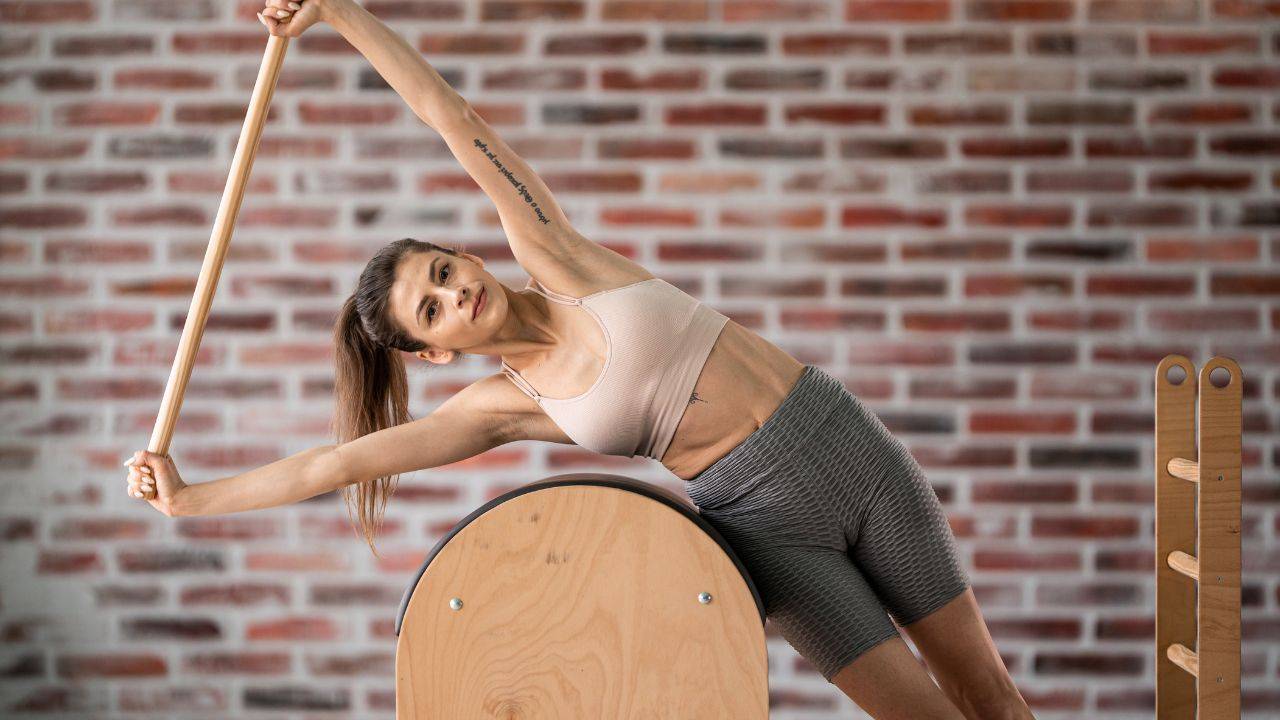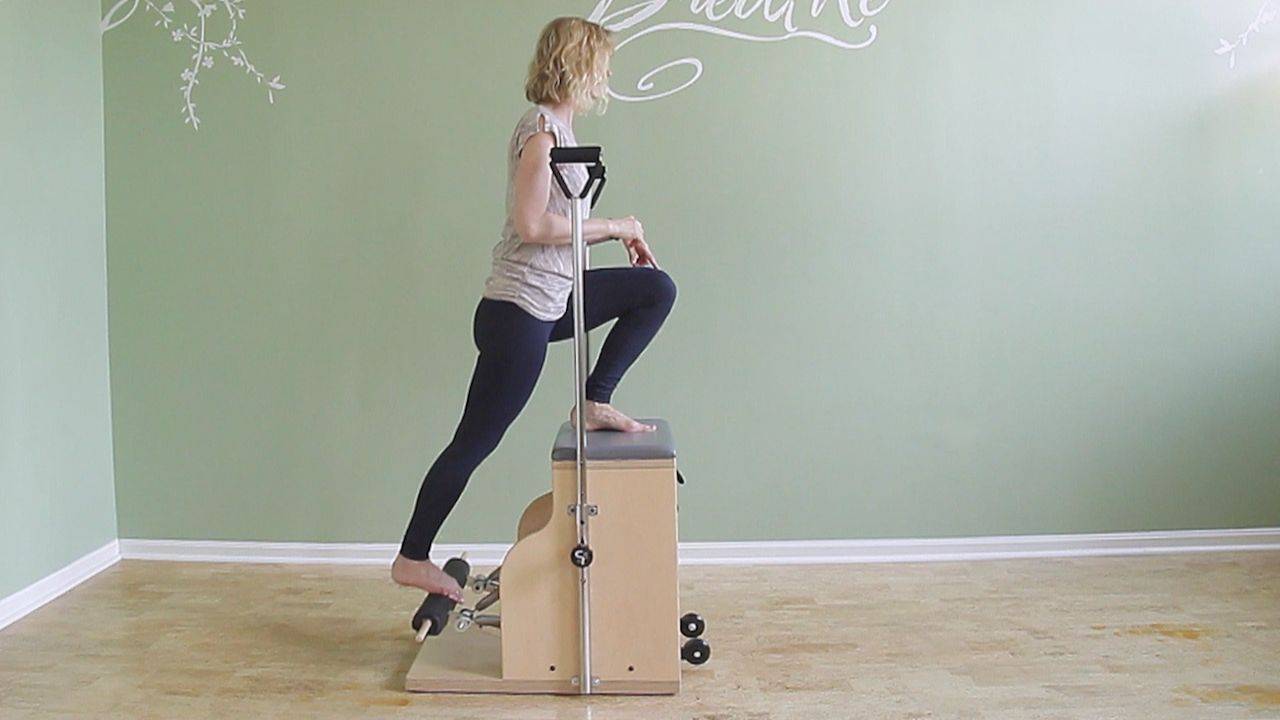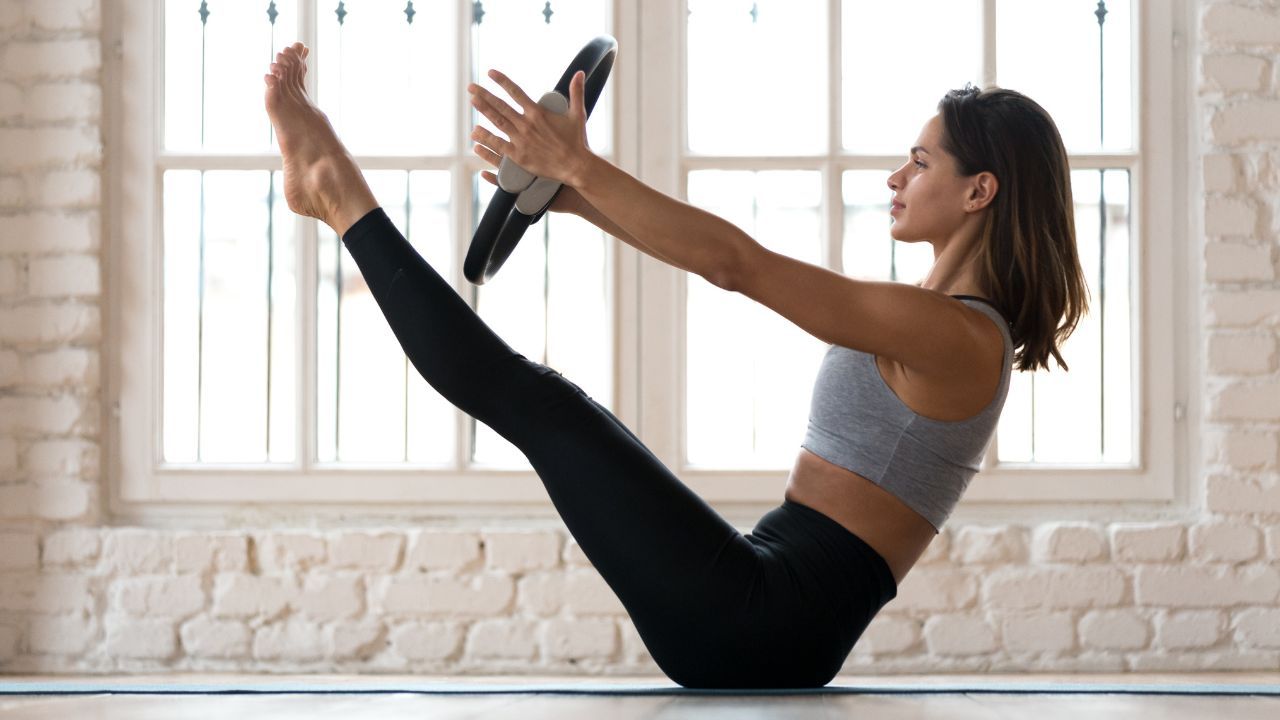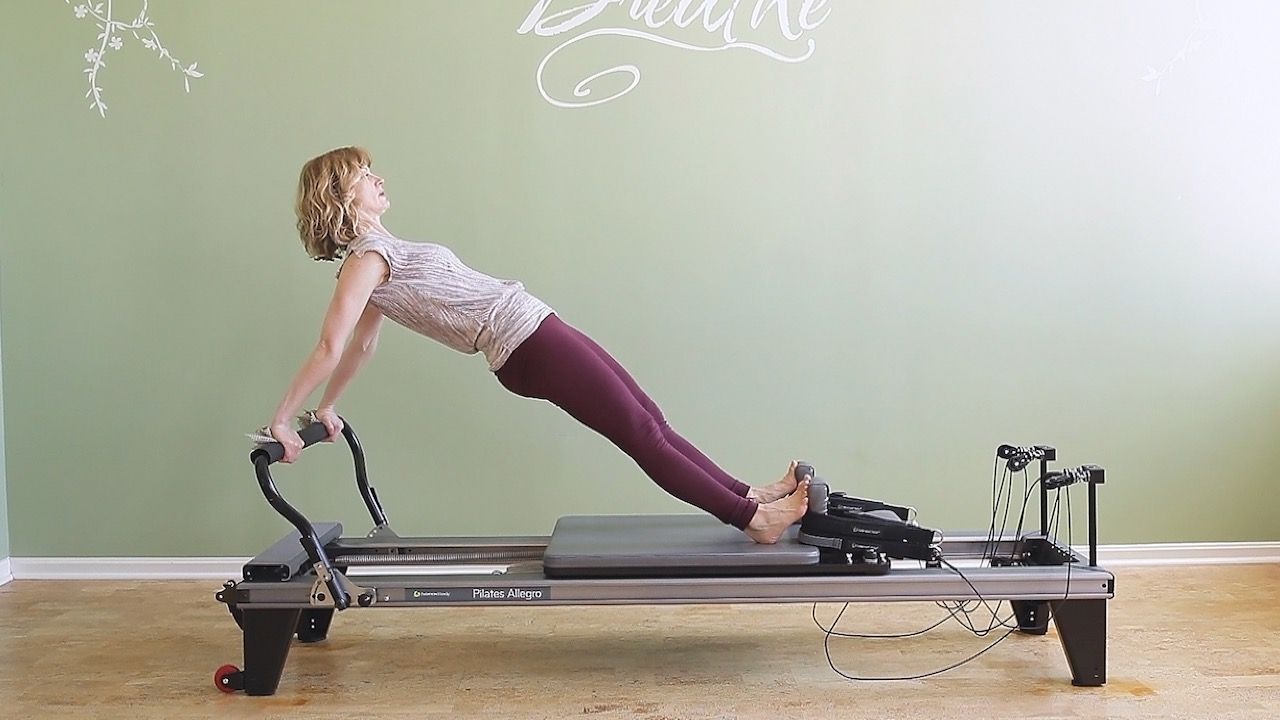The Swan Dive: Mat vs. Spine Corrector
Oct 11, 2022
The Swan Dive is an advanced exercise in the Pilates repertoire, no matter which version you choose. But each apparatus challenges and supports the body in different ways. Let's compare the Swan Dive on the mat and on the Spine Corrector.
In both instances, we're dealing with a full-body exercise, and both activate the posterior chain on the sagittal plane. Your spine and hips are in extension, your abdominal wall needs to be active in a long position against the pull of gravity, and you need to organize your shoulder girdle. Jeez! 😅
Swan Dive on the Mat
You might think I'm crazy when I say that the mat version of the Swan Dive is the easier one. The reason for this is that you can use momentum for the forward and backwards rocking movement. Even though you should activate your abdominal wall, nothing happens if you don't. The floor will catch you (watch your nose!).
You can use whichever muscles in your posterior chain are strong to throw yourself into it. Granted, you do need some mobility into extension. The more (hyper-)mobile your lumbar spine, the easier this will be for you. If your spine and/or hips have poor mobility into extension then the rocking movement will be quite short, which means you'll have to speed it up. The more you can arch your back and create this bow shape, the longer the movement arc and the slower the movement can be.
If the continuous rocking is too much for you, catch yourself in between each repetition, giving you time to regroup. If your shoulders are tight or your lose your shoulder girdle alignment when reaching your arms forward, either reach your arms out to the sides, or keep them bent by your side. Luckily, we always have options in Pilates.
If you have real trouble rocking back and forth, regress the exercise to perform the teeter totter movement slowly and with control. Here's what I mean. 👇🏼
The Seesaw shown above is surprisingly a great preparation for the Swan Dive on the Spine Corrector.
Swan Dive on the Spine Corrector
This version is sometimes called Swan. I prefer to call is Swan Dive because the arms are off the floor, either reaching forward in shoulder flexion or out to the side in abduction. There is a version of Swan on the Spine Corrector in which you keep your hands on the mat. This makes it easier for me to know what I'm talking about when taking client notes, for example.
The biggest difference you encounter on the Pilates Arc is the smaller contact area with the body. Only a short section of your front body (lower abdominal wall) is touching the apparatus, which gives you a much more focused pivoting point. It is incredibly difficult to maintain a strong core connection.
As often in Pilates, advanced exercises highlight the lack of specific movement skills in your body. In my example, you can clearly see in the thumbnail below, how my front ribs are wide and dropping down with gravity. Keeping the lower ribs in connection with the pelvis while reaching the sternum forward into thoracic extension AND widening across the chest, is probably the most difficult movement skill we come across in the Pilates repertoire. #boredombusters
The first step to achieving the Swan Dive is to find the perfect balance point, where you can lift your legs, upper body and arms off the floor without tipping in either direction. Take some time to shift around until you've found that sweet spot. Be aware that your arm position will drastically change that balance point position. If you reach your arms back (as in a Dart), your contact point with the apparatus will be further down your front body (towards the pelvis). If you move your arms to a T, you'll have to scoot forward a bit, and if you intend to lift your arms forward towards your ears, you'll have to move even further back. It's simple physics. It's just like in a teeter totter. The pivoting point needs to be centered between the two end points.
The next challenge you'll face when trying to master the Swan Dive on the Arc Barrel is equal strength and activity in the lower body and the upper body, as well as the front and back body. If your spine extensors are weak but your hip extensors are strong, that's not balanced and it will push you forward. If your spine is strong and your hips are weak, it'll push you back.
But the most common problem I see when people are struggling with this exercise, is that they don't keep the connection from head to toe. They "break" in the middle. Even though the back body is what creates the bow shape and the rocking movement, the front body (specifically the abdominals) is what keeps your upper and lower body connected. The wooden board of a playground's teeter totter needs to be strong and stiff. Imagine it were made of rubber, you couldn't transfer any power from one end to the other. The stiffness in this exercise comes from your abdominal muscles. But "navel to spine" won't work here. Nor "knit your ribs together." None of the traditional core cues will work, because they all cause a C-curve, a shortening of the abdominals. In this case, we need them to remain long, but still active. Imagine stretching a rubber band. The longer you pull it, the thinner it gets but it gets taut and strong. Keep this image in your mind as you practice activating the abdominal wall in a long position against gravity. Think of "zipping up a jacket", lifting your pubis to your navel and your navel to your heart.
Hope this was helpful!










